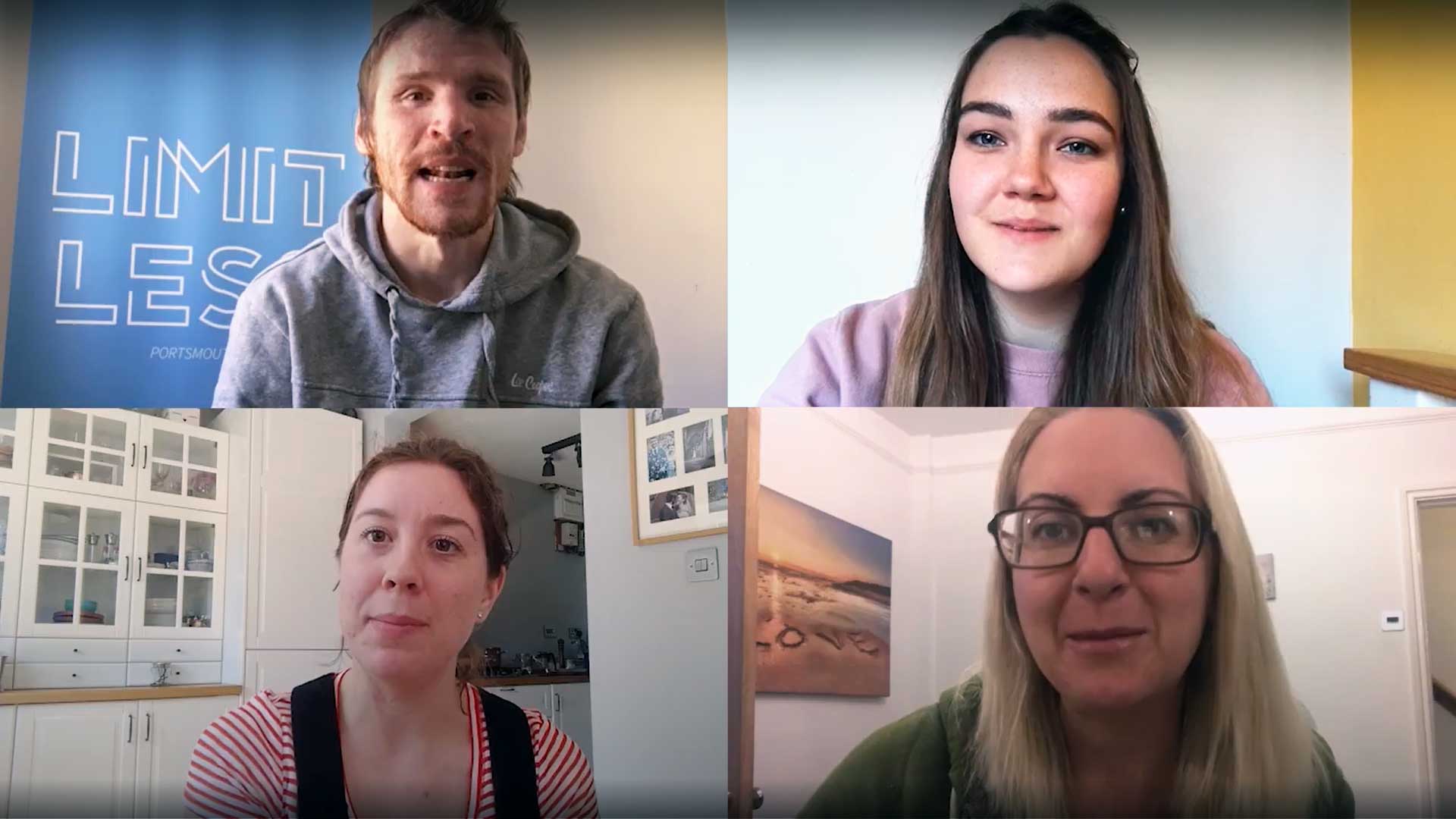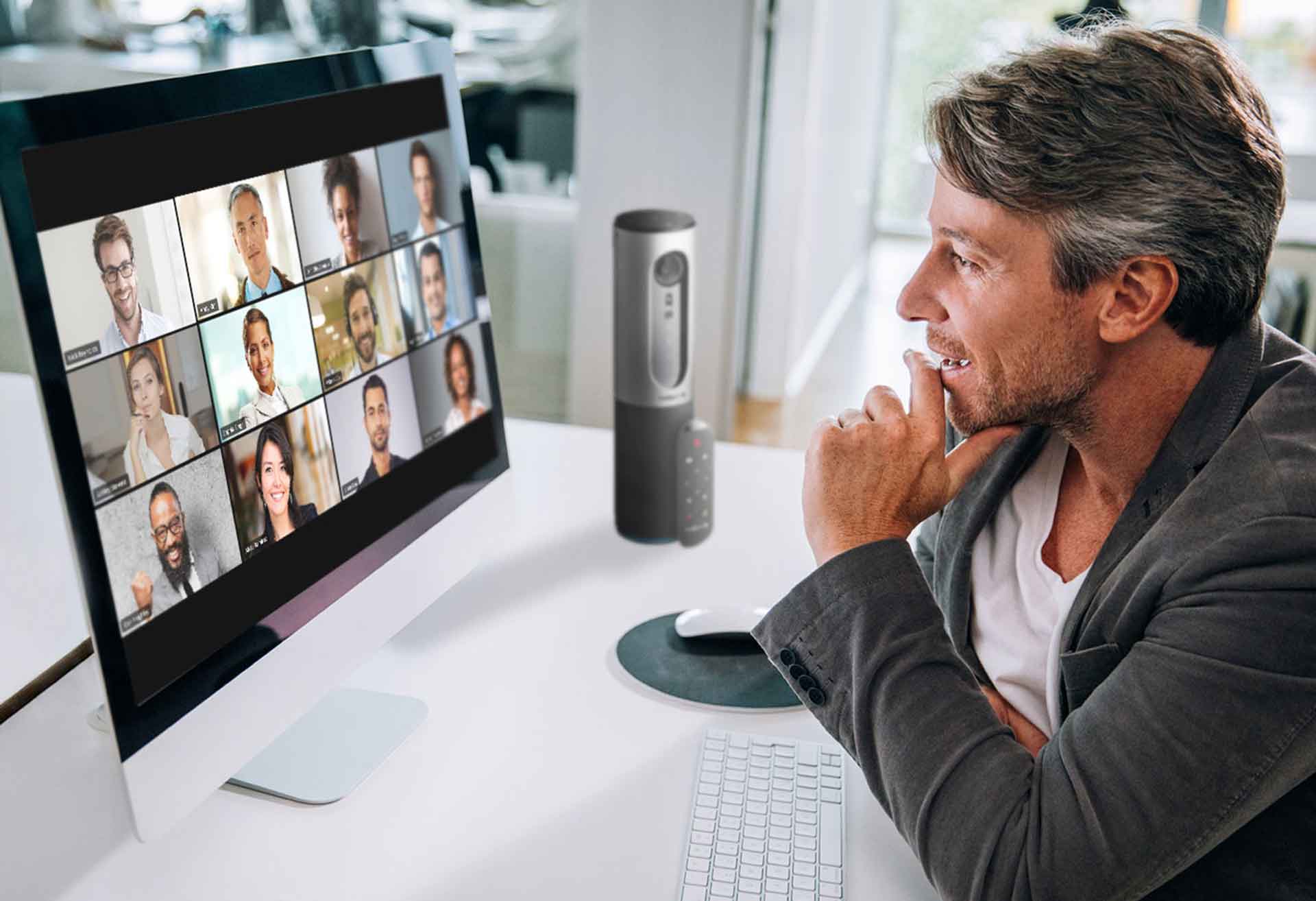
Tim Alford
Learn from my mistakes - a guide to youth ministry on Zoom
Tim Alford shares the mistakes of not securely using Zoom.
It was a full-blown disaster. A fail of truly meteoric proportions. But we’ll come to that…
With the sudden and rapid spread of the COVID-19 pandemic, youth leaders all over the globe found themselves moving their youth ministry online. We tried all kinds of approaches and apps, from live broadcasts on Instagram, YouTube and Facebook, to group chats on What’s App and Messenger.
The middle ground that most of us settled on as our bread and butter for youth ministry online, however, was Zoom, a video-conferencing application that was more reliable than Skype, more functional than FaceTime, and more safeguarding-friendly than HouseParty!
Until then Zoom had been swimming along in the background, utilised by a few forward-thinking organisations to manage remote teams, until all of a sudden, practically overnight, we were all expected to be Zoom-experts. Except we weren’t, which brings me back to the story.
So where were we? Oh yes; the fail of meteoric proportions. It was shortly after the people of the UK had found themselves in lockdown, youth leaders had many more questions than answers, so we at LIMITLESS decided to go early and facilitate a shared learning environment via Zoom that we called a Live Online Youth Leaders Forum.
The appetite for learning was obvious with more than 150 youth leaders from all over the UK and even further afield having logged on to see what they could glean. We had prepared well, inviting some guests to share who had been experimenting with some interesting approaches, as well as creating space for questions and break out discussions. As the countdown video played we waited with eager expectation for youth ministry colleagues near and far to learn and grow together.
All was going as planned until just as the countdown video was reaching its final few seconds, some strange lines starting appearing on the screen. As the countdown video reached its conclusion and I began to welcome everyone, I noticed some unsavoury language appearing in the chat. Our administrator attempted to quickly remove the culprits, but they were logging back in with equal speed. And then it got really bad.
An explicit image was shared, for which I immediately apologised, followed by foul and anti-God language through the microphones. It quickly became apparent that we could not remove the individuals quickly enough, so I made the call to end the forum there and then, less than five minutes after it started.

We had been 'Zoom-bombed,' something was becoming an increasing problem across the globe with the sudden rise of Zoom users during the coronavirus pandemic, but that didn’t make it any better.
When the meeting closed I was shell-shocked and close to tears. I felt responsible. Our leadership team assembled immediately after the call to deal with the aftermath, and apologies were distributed quickly and widely. But there was no getting around it; this was a terrible and shocking disaster.
We had attempted to do something early to serve people and help them in their youth ministry, and instead, we exposed people to something highly unpleasant. Indeed, the only help we had been was to demonstrate how not to do youth ministry on Zoom! I suppose the only saving grace that it was amongst leaders rather than young people, but it was a meteoric failure none-the-less.
Still, we had a choice at that moment. We could have decided that this Zoom business was far too risky and given up right there, or we could decide to learn from our mistakes, change our practice and go again.
We chose the latter, and since that time I have hosted and participated in more Zoom meetings than I’d dare to count, with young people, leaders and teams alike. And I’m pleased to say that, since that first harrowing attempt, we’ve experienced some very positive shared learning experiences and gatherings of young people. So here are a few things I’ve been learning from both failure and success.

1. Do not make your meeting link public!
Our first mistake was making our Zoom ID public. We thought by doing this we would be able to engage more leaders in the shared learning experience (which it did), but sadly it also attracted some people with more destructive intentions. The alternative is simple, share your meeting links directly with your young people only via your databases or DM’s, and always ensure the meetings are password protected.
If you want to take this a step further you can require pre-registration for the meeting also, and utilise the use of the ‘waiting room’ function which enables you to see everyone’s ID before you permit them entry into the meeting.
2. Shut down all share functions and have all participants muted as default
This was our critical error on that fateful day. Never had we imagined someone would want to invade a meeting of youth leaders to troll it, but had we disabled all of these functions we would have avoided much of the disruption we encountered. So shut down the draw and screen share functions in the Zoom settings, and have all mics muted as default.
Once you are confident that you have only the people in the meeting that should be in the meeting, you can unmute the mics and enable share functions for games and conversation, (though I would definitely advise hitting ‘mute all’ for the moments you are presenting). You may want to also consider closing the meeting ten minutes or so minutes after the start time to stop any unwanted intruders “Zoom-bombing” partway through, the disadvantage of this is that if any of the young people lose connection and try to log back in they will be unable to do so… so it’s a judgement call.

3. Ask everyone (including yourself) to ‘Hide Self View’
In case you hadn’t noticed, Zoom is exhausting. There are more reasons for this than we have time to delve into here, but one of the key reasons is that we tend to spend the whole time looking at ourselves! We are therefore constantly aware of our facial expression and posture, which is not something we experience in a normal conversation.
We find ourselves adjusting our hair, adjusting the camera so we fit within the frame, and generally giving more attention to ourselves than the people we are engaging with. We become hyper-self-aware in an unhealthy way, and leave the call feeling knackered! The solution is simple, use the ‘Hide Self View’ function which removes your camera from your screen only, and ask all of the young people to do the same. This means we feel more at ease with ourselves as our focus turns appropriately to the people on the other side of the call.
4. All-Play Games
Since moving youth ministry online I’ve attempted all sorts of games with young people, and I’ve come to understand one simple principle for success: Utilise games that everyone can play at once, rather than games that involve taking turns. It’s so easy to be distracted and disengage when you’re not directly involved - watching someone else have fun is no fun on Zoom!
So simple games like Bring Me (run around your house and collect listed items), Guess Who / What (screen share close-ups of celebrities, people in your group and team, or random objects), for example, are easy wins.
There are also some great online resources for all-play games. skribbl.io is an all-play online Pictionary (more fun than it sounds!), Kahoot is an online quiz that everyone can engage with via a free app, and Sidekick is a fantastic application packed full of great games for youth ministry online (though there is a small subscription fee).

5. Leading Questions
Ever asked a question like, ‘so how are you feeling that exams have been cancelled?’ only to be met with a wall of silence as a digital tumbleweed rolls across your screen? Well, there’s a reason for this, and it’s not necessarily because your young people are disengaged and uninterested, but rather because of the functionality of the teenage brain.
The parts of the brain responsible for abstract thinking are developing during the teenage years. This means that their ability to speculate, to reflect on their emotions, and to consider themselves from a third-person perspective is limited, particularly in young teens. Therefore, open-ended questions like ‘how are you feeling about…,’ will be very difficult to answer for many of our young people.
This is true in normal life but is especially so on Zoom where it is more difficult to read and respond to the social cues of everyone else in the conversation, and where, as previously discussed, our sense of self-awareness is heightened. Thus, trying to encourage our young people to extrapolate abstract concepts via Zoom will likely be an uphill struggle. But fear not, there is a simple workaround.
Do whatever you can to enable concrete answers to abstract questions. For example, rather than asking an open-ended question that requires abstract thinking and reflection such as, ‘how have you been feeling while isolating at home this week?’, we can instead ask a question to which a concrete answer can be given, such as, 'on a scale of 1-10, how difficult have you found isolating at home this week?’
The additional strength of this is on Zoom is that you can ask young people to answer via the chat function, which is a less daunting prospect altogether. The other means by which we can avoid the wall of silence is to ask questions directly by name.
So rather than saying, ‘has everyone had a good week?’, and hoping someone will answer, we say, ‘So Beth, what was the best thing you did this week?’ The point is, do not ask open-ended questions, instead be specific and concrete. By doing so you will avoid the awkward wall of silence whilst help young people to reflect and engage.
6. Camera Breaks
In addition to asking young people to ‘Hide Self View,’ you may want to consider working camera breaks into your Zoom sessions, particularly if you’re going any longer than an hour. So let’s say you’re reading a passage of Scripture together. Why not ask a specific question or set a specific task upon which you will ask them to feedback, and then ask everyone to turn off their camera and mute their mic while they complete the task.
This gives them a break from that feeling of self-consciousness and will allow them to fully engage in the passage without worrying about how they are coming across. But be warned, you must be very specific about the time you expect them to log back in!
I would also recommend that you don’t do this for any longer than three minutes at a time lest you lose people to other distractions; it’s better to do this in regular short spells than one longer spell.
7. Scripture in the Round
One thing I’ve tried that worked quite effectively was reading a passage of Scripture together a verse at a time, involving everyone on the Zoom call. This forces everyone needs to be fully engaged in the passage to ensure they don’t miss their turn! If you’re going to give this a try, my advice would be to drop the names of the people in the call in a specific order in the chat so that all of the young people know for sure when it’s their turn to read.
8. Breakout Rooms
For many young people, it’s much easier to be open and forthcoming in smaller groups than in a large group call with loads of faces looking at them. So if you have a larger youth group you can use the 'rooms' function to break into smaller groups. However, if you do ensure you assign a leader to each room to facilitate the conversation and prepare specific questions for them to gather around. You could then take feedback from one person in each group once everyone rejoins the main room.

9. Prayer
Let’s face it, prayer on Zoom can be awkward, with lots of potential distractions to knock us off course. I’d suggest praying with your eyes open and asking specific people to pray who you know will be willing to do so - whilst allowing others to pray if they’d like to. With all that said, let’s not allow prayer to slip from our gatherings. One of my greatest concerns with youth ministry online is that it becomes all practical, relational and fun, but we lose the opportunity to truly encounter God in a deep and transformative way.
So why not ask your young people if anyone needs healing, and get everyone praying for them right there and then? Or how about doing a ‘hot seat’ style prayer where we ask young people to listen to God for a specific individual and speak out words of knowledge, prophecy and encouragement over their lives? In many ways, Zoom feels like a limitation for the things we’d normally like to see happen in our youth ministries, but the good news is… God is not limited by our limitations! So let’s be bold and courageous, and let’s expect God to move in the lives of our young people - even on Zoom.
It seems to me that the COVID-19 pandemic has been the great leveller. Suddenly everything we’d become so accustomed to is gone and we’re all novices again. We’re all trying, we’re all learning… and we’re all failing. But friend, do not shrink back!
I cannot think of anything more important you could give your life to than passing on the gospel to the next generation… so keep going, don’t give up, because what you are doing is important.
Enjoy this article? Don't forget to share